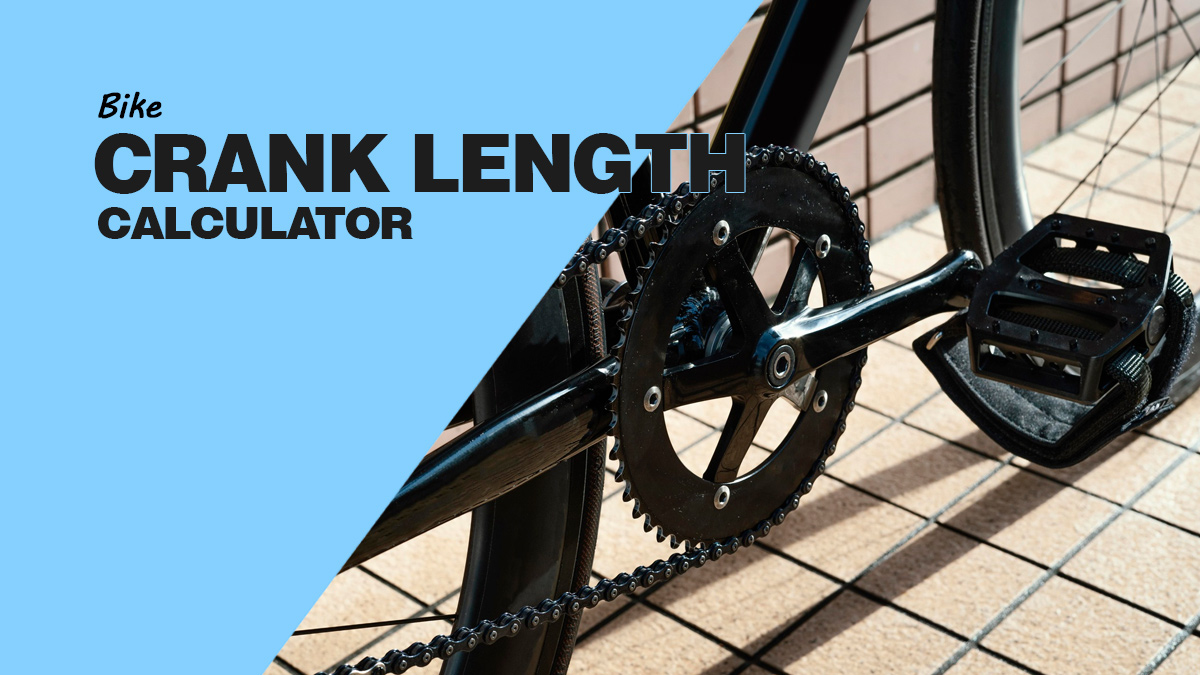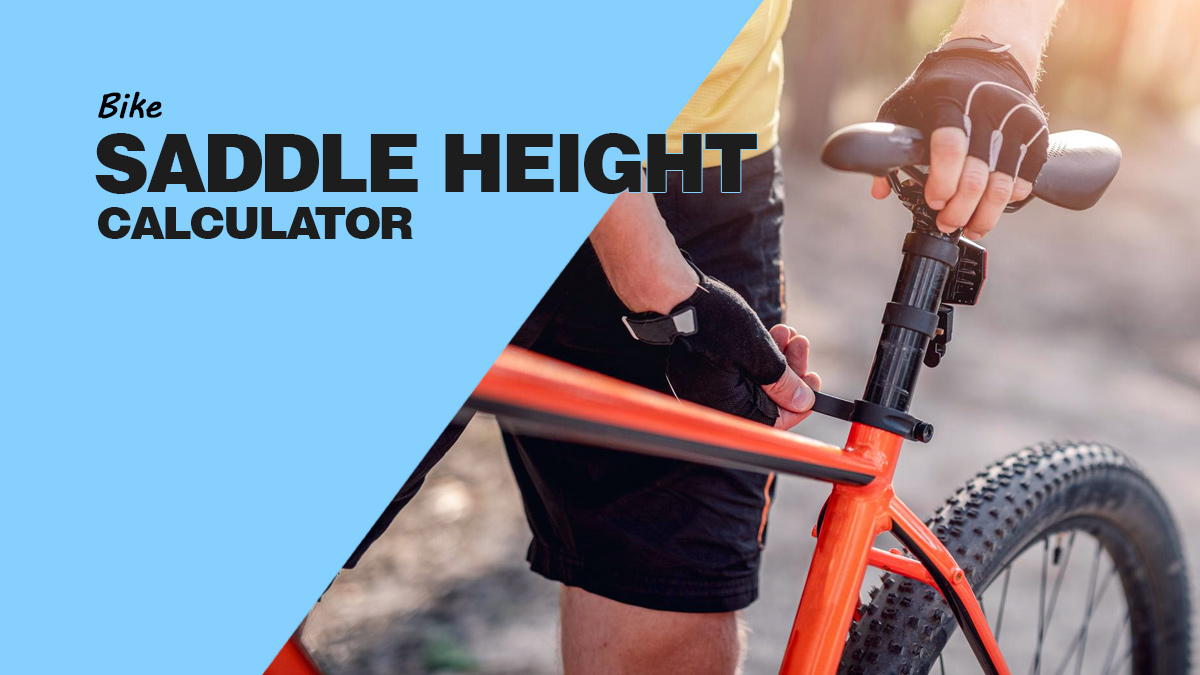Bike Gear Ratio Calculator
Gear Ratios for these gears are:
Our bike gear calculator will assist you in selecting chainrings and cogs. Many modern bicycles have a variety of gears, so there are many possible bike gear ratios to consider. Choose the range of interest and see which combination is ideal for your cycling habits and circumstances. As a consequence, you will receive tables in gear ratio and inch units instead of speed.
Gear Raito Formula
Gear Inches Formula
Step-by-Step Guide to Using Our Bike Gear Ratio Calculator
Follow these simple steps to determine your optimal gear ratios using our bike gear ratio calculator:
- Select the Min and Max number of teeth on your bike’s chainrings.
- Select the the Min and Max number of teeth on your bike’s Cog.
- Click “Calculate” to generate a list of gear ratios, gear inches, gain ratios, and development values for each gear combination.
- Analyze the results to identify the optimal gear ratios for your specific cycling needs and preferences.
Bike Gear Ratios
Bike gear ratios play a crucial role in cycling efficiency and comfort. A well-selected gear ratio allows you to pedal smoothly, maintain a consistent cadence, and conquer various terrains with ease. This article will explore the intricacies of bike gear ratios and provide you with the knowledge and tools to optimize your cycling experience.
Understanding Chainrings and Cassettes
Bicycle gears consist of two primary components: the chainrings and the cassette. Chainrings are the large sprockets connected to the crankset, while the cassette consists of a collection of sprockets on the rear wheel’s hub. The combination of these components determines your gear ratio, which directly impacts your cycling efficiency.
Chainrings
Chainrings come in various sizes, typically ranging from 30 to 53 teeth. The number of teeth determines the chainring’s size, with more teeth correlating to a larger diameter. Bikes with multiple chainrings provide greater versatility and are suitable for a wide range of terrains and cycling styles.
Cassettes
Cassettes are comprised of multiple sprockets, with a varying number of teeth on each. As with chainrings, the number of teeth impacts the gear ratio. A cassette with a wider range of teeth enables a broader spectrum of gear ratios, enhancing your cycling experience on diverse terrains.
Bike Gear Ratio Calculator: How It Works
Our bike gear ratio calculator simplifies the process of determining your ideal gear ratio. By inputting your bike’s chainring and cassette specifications, the calculator generates a comprehensive list of gear ratios, allowing you to optimize your cycling performance based on your unique needs and preferences.
Optimizing Your Gear Ratios for Different Cycling Situations
Different cycling situations call for varying gear ratios. Understanding the optimal gear ratio for your specific needs is essential in maximizing your cycling performance.
Climbing
When climbing, a lower gear ratio is ideal, allowing you to maintain a comfortable cadence without exerting excessive force. Look for smaller chainrings and larger cassettes to achieve lower gear ratios.
Descending
For descending, a higher gear ratio is preferable. Larger chainrings and smaller cassettes provide higher gear ratios, enabling you to maintain speed and control while descending.
Time Trials and Racing
Time trials and racing scenarios often require a balance between high and low gear ratios. For these situations, consider a bike with multiple chainrings and a versatile cassette to accommodate various cycling conditions and terrains.
Commuting and Casual Riding
For commuting and casual riding, a mid-range gear ratio is typically sufficient. Prioritize a bike with a balanced combination of chainrings and cassettes to ensure a comfortable and efficient cycling experience.
Gear Inches, Gain Ratios, and Development: Advanced Metrics
Apart from gear ratios, there are other essential metrics to consider when evaluating your bike’s gearing system: gear inches, gain ratios, and development.
Gear Inches
Gear inches represent the effective diameter of the rear wheel, factoring in the selected gear ratio. To calculate gear inches, divide the number of chainring teeth by the number of cassette teeth, and multiply the result by the rear wheel diameter (in inches). Gear inches provide a practical measurement of how far your bike will travel with each pedal revolution.
Gain Ratios
Gain ratios take into account both the gear ratio and the effective diameter of the front and rear wheels. This metric provides a more comprehensive understanding of your bike’s gearing performance by accounting for wheel size variations. To calculate the gain ratio, divide the number of chainring teeth by the number of cassette teeth, and then divide the result by the wheel diameter ratio (front wheel diameter / rear wheel diameter).
Development
Development, or rollout, measures the distance traveled per pedal revolution in a specific gear. To calculate development, multiply the gear ratio by the circumference of the rear wheel (in meters). Development provides valuable insight into your bike’s efficiency across various gear ratios.
Conclusion
Understanding and optimizing your bike’s gear ratios is essential for maximizing your cycling performance and comfort. Our comprehensive bike gear ratio calculator simplifies this process, providing you with the knowledge and tools to conquer various terrains and cycling situations with ease. By considering factors such as chainrings, cassettes, gear inches, gain ratios, and development, you can make informed decisions about your bike’s gearing system and ultimately elevate your cycling experience.
Related: Bicycle Gear Ratio Dynamic Chart
Should you have any questions or require further clarification on the topic, please feel free to connect with our expert author Jerry O by leaving a comment below. We value your engagement and are here to assist you.







